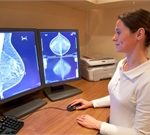Having dense breast tissue raises a woman’s odds for breast cancer, so many states require providers to notify women if a mammogram finds they have dense breast tissue.
But a new study suggests that the notifications may be having little impact in alerting women to their added breast cancer risk.
The goal of dense breast notifications is to spur a conversation between a woman and her health care provider. The provider can let a woman know how having dense breast tissue affects her personal risk of breast cancer or detecting it. And, if necessary, a woman can get recommendations for more screening tests.
Yet, the study found that less than half of women understood that having dense breasts increases their cancer risk. This was true whether or not women lived in a state that required dense breast notifications.
The researchers concluded that the wording of these messages needs to be easier to understand.
“Health communications that are intended to inform patients about cancer screening should be carefully developed through rigorous testing that ensures the desired outcomes of better knowledge, increased awareness, and discussions with physicians are achieved,” said lead author Nancy Kressin, a professor of medicine at Boston University School of Medicine.
Kressin added that unintended consequences — anxiety, confusion or skipping breast cancer screenings — need to be minimized.
The U.S. Food and Drug Administration (FDA) is at work on language for dense breast notifications to be used nationwide.
“We hope the FDA will give very careful attention to these issues as it develops a national breast notification,” Kressin said.
Women who have dense breasts have more glandular tissue and fibrous connective tissue in their breasts, but less fatty tissue. This isn’t something you can feel. It’s only apparent on a mammogram, according to the U.S. National Cancer Institute (NCI).
About half of women over 40 in the United States have dense breasts, the NCI said. Women with dense breasts have a higher risk of developing breast cancer.
About two-thirds of U.S. states require dense breast notification.
For the study, the researchers surveyed nearly 600 women nationwide. All were over 40 and had undergone mammography in the past two years.
Most women (76%) had heard of breast density, and about 80% knew that it referred to how breasts look on a mammogram. The researchers didn’t find any significant difference between women based on whether their state required notification.
There were also no differences in whether a woman had discussed breast density with her doctor based on notification laws.
Kressin said the notification laws don’t always mandate how information is provided, so the process and the wording can vary.
“In prior studies, women have told us that they were so confused by the notifications that they intended to stop having mammograms altogether. If that happens, women run the risk of not having breast cancers identified,” she said.
Kressin said the notifications should be written in clear, simple language — at no higher than an eighth-grade reading level.
Dr. Stephanie Bernik, chief of breast surgery at Mount Sinai West in New York City, reacted to the findings. She said it is unfortunate that the notifications seem to have so little impact on women’s understanding of their breast cancer risk.
“It appears that more needs to be done to get the message out that if a woman has dense breast tissue, she may have to do more than just a mammogram, and should probably advocate for a 3D mammogram and breast ultrasound,” Bernik noted.
The findings were recently published online in the Journal of General Internal Medicine.
More information
Learn more about dense breasts and cancer risk from the U.S. National Cancer Institute.
Copyright © 2025 HealthDay. All rights reserved.





-300x169.jpg)










